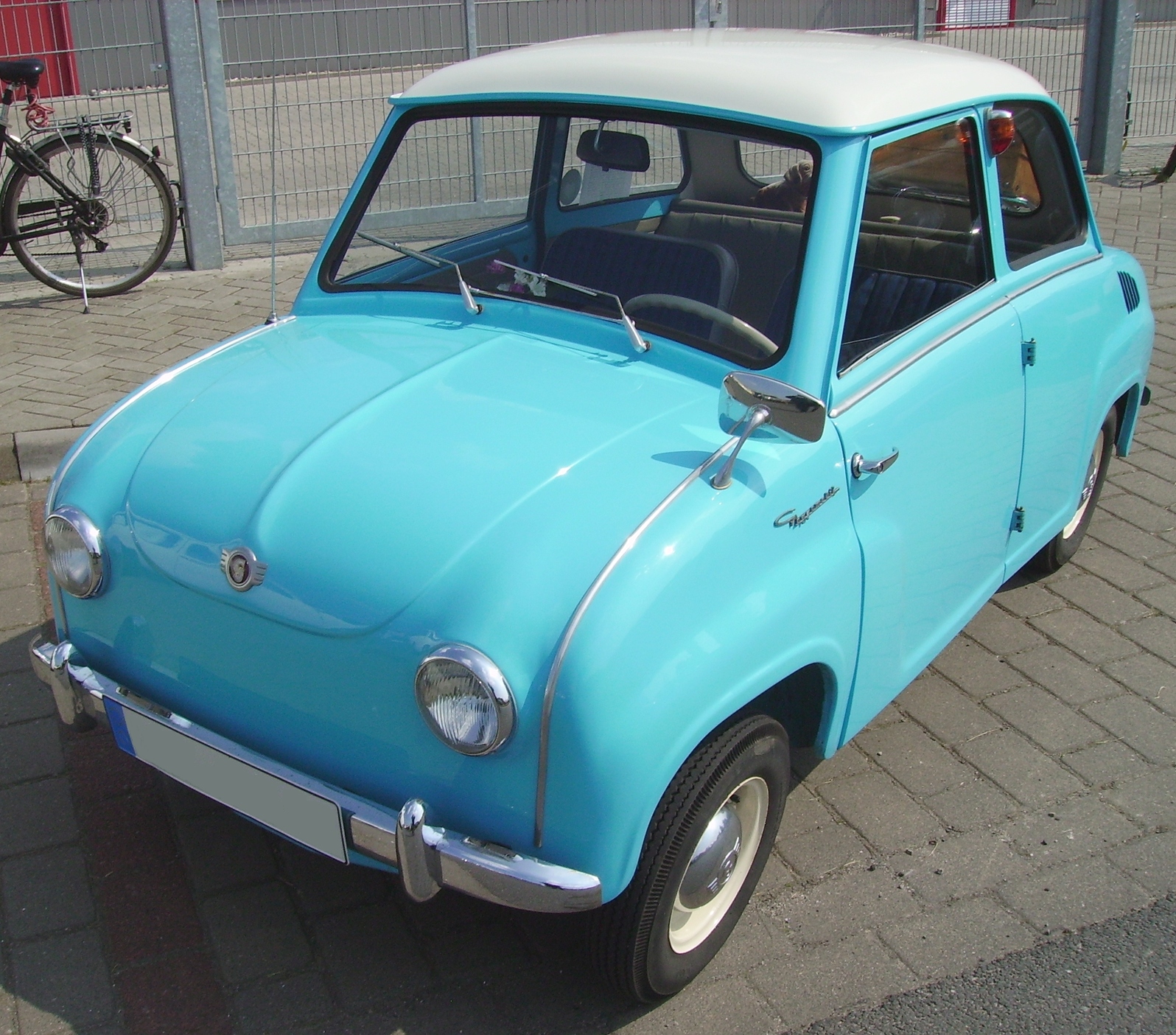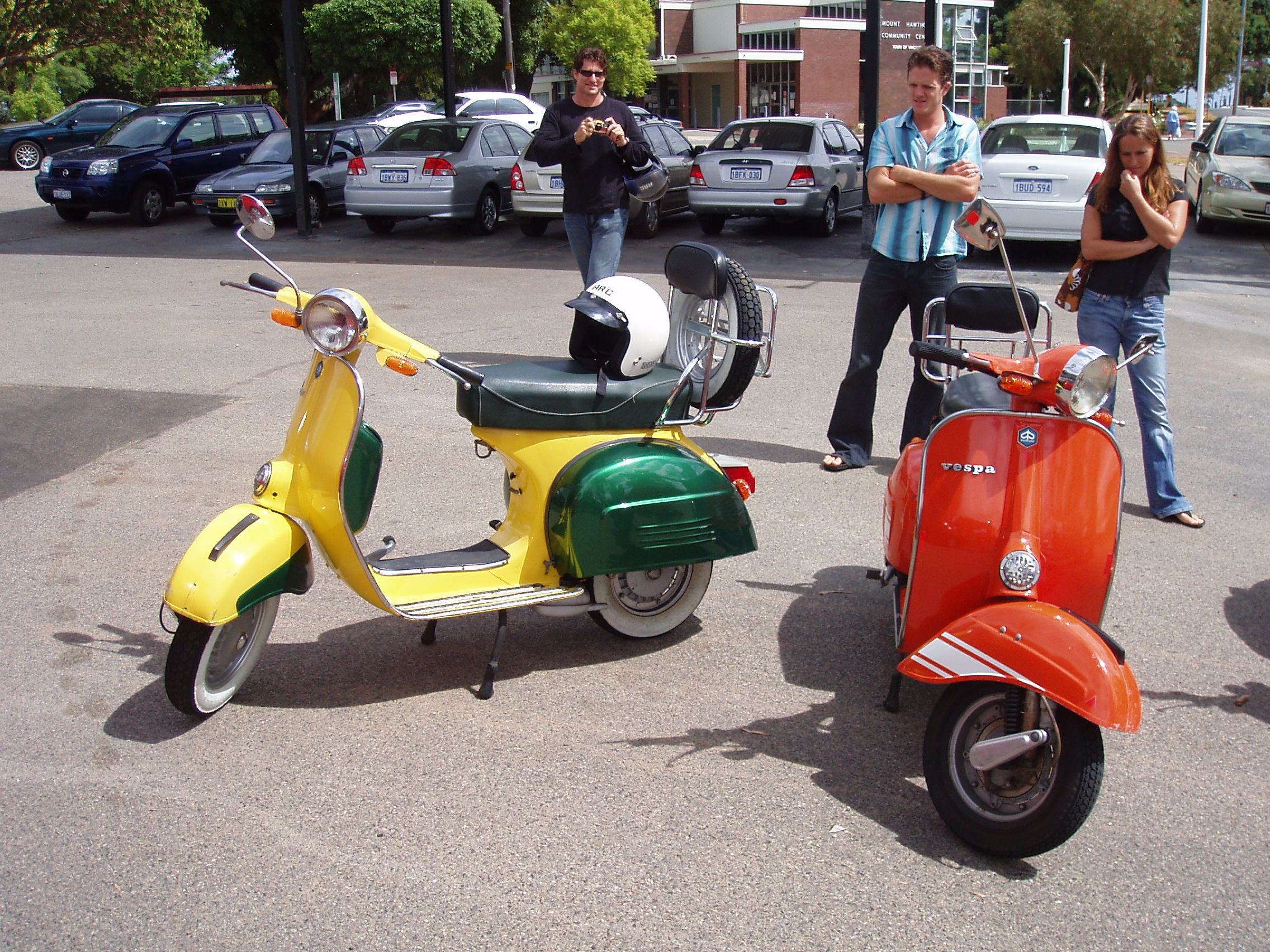|
Glas (company)
Hans Glas GmbH is a former German automotive company, which was based in Dingolfing. Originally a maker of farm machinery, Glas evolved first into a producer of motor scooters, then automobiles. It was purchased by BMW in 1966, mainly to gain access to Glas's patents; they were the first to use a timing belt with an overhead camshaft in an automotive application. Its limited model range was shortly phased out by its new parent. History Mechanic Andreas Glas (born 1857, son of Maurus who founded the first agricultural machinery factory in Bavaria in Freising in 1860) founded his own repair company for agricultural machines in 1883 in Pilsting. He named the company ''Andreas Glas, Reparaturwerkstätte für landwirtschaftliche Maschinen mit Dampfbetrieb'' (in English: Andreas Glas, repair-shop for steam-powered agricultural machines). During the summer periods about 16 people worked for him. In 1905 Andreas Glas' company built their first crop sowing machines (seed drill). He ... [...More Info...] [...Related Items...] OR: [Wikipedia] [Google] [Baidu] |
Dingolfing
Dingolfing is a town in southern Bavaria, Germany. It is the seat of the Landkreis (district) Dingolfing-Landau. Dingolfing is home of a BMW assembly plant. History The area now called Dingolfing was first mentioned in ''Tinguluinga'' in the year 833. In the year 1251 the duke of Bavaria, Otto II. awarded municipal rights to the town, which was the Upper City. The Lower City, around the church of St. John's, was an older settlement belonging to the Prince-Bishopric of Regensburg. By treaty of 1265 between Duke and Bishop, both cities were united. Dingolfing's large growth took place during the years of about 1315 to 1600. During this time the city prospered mostly through trade, fishing, leather craft and the production of wool cloths. The duke promoted these works, causing Dingolfing to prosper even more. The war of Austrian succession caused very heavy damage to the city and decimated the population by epidemics. The city became nothing more than debris and ash on May 16, ... [...More Info...] [...Related Items...] OR: [Wikipedia] [Google] [Baidu] |
Glas Isar
The Glas Isar is a small two door four seater car produced by Hans Glas GmbH at their Dingolfing plant. The car was first presented as the Goggomobil T600 in September 1957 at the Frankfurt Motor Show, with volume production starting in August 1958. Initially Glas described it simply as a "big Goggomobil", but in autumn 1959 it was rebranded as the Glas Isar. At the same time a kombi (estate car) version joined the range. A minor facelift occurred in August 1960 and the Isar continued in production until the end of Summer 1965. Origins The car that appeared at the 1957 Frankfurt Motor Show was a prototype which in the event differed significantly from the car that entered production the next year, in that it used front wheel drive. In most other respects, notably regarding the two cylinder Flat engine, boxer engine and the overall shape of the car, only minor stylistic changes differentiated the cars that went into production in 1958 from the 1957 prototypes. The front w ... [...More Info...] [...Related Items...] OR: [Wikipedia] [Google] [Baidu] |
Popular Science
''Popular Science'' (also known as ''PopSci'') is an American digital magazine carrying popular science content, which refers to articles for the general reader on science and technology subjects. ''Popular Science'' has won over 58 awards, including the American Society of Magazine Editors awards for its journalistic excellence in 2003 (for General Excellence), 2004 (for Best Magazine Section), and 2019 (for Single-Topic Issue). With roots beginning in 1872, ''Popular Science'' has been translated into over 30 languages and is distributed to at least 45 countries. Early history ''The Popular Science Monthly'', as the publication was originally called, was founded in May 1872 by Edward L. Youmans to disseminate scientific knowledge to the educated layman. Youmans had previously worked as an editor for the weekly ''Appleton's Journal'' and persuaded them to publish his new journal. Early issues were mostly reprints of English periodicals. The journal became an outlet for writings ... [...More Info...] [...Related Items...] OR: [Wikipedia] [Google] [Baidu] |
Horsepower
Horsepower (hp) is a unit of measurement of power, or the rate at which work is done, usually in reference to the output of engines or motors. There are many different standards and types of horsepower. Two common definitions used today are the mechanical horsepower (or imperial horsepower), which is about 745.7 watts, and the metric horsepower, which is approximately 735.5 watts. The term was adopted in the late 18th century by Scottish engineer James Watt to compare the output of steam engines with the power of draft horses. It was later expanded to include the output power of other types of piston engines, as well as turbines, electric motors and other machinery. The definition of the unit varied among geographical regions. Most countries now use the SI unit watt for measurement of power. With the implementation of the EU Directive 80/181/EEC on 1 January 2010, the use of horsepower in the EU is permitted only as a supplementary unit. History The development of the stea ... [...More Info...] [...Related Items...] OR: [Wikipedia] [Google] [Baidu] |
Verona
Verona ( , ; vec, Verona or ) is a city on the Adige River in Veneto, Northern Italy, Italy, with 258,031 inhabitants. It is one of the seven provincial capitals of the region. It is the largest city Comune, municipality in the region and the second largest in northeastern Italy. The metropolitan area of Verona covers an area of and has a population of 714,310 inhabitants. It is one of the main tourist destinations in northern Italy because of its artistic heritage and several annual fairs and shows as well as the Opera, opera season in the Verona Arena, Arena, an ancient Ancient Rome, Roman Amphitheatre, amphitheater. Between the 13th and 14th century the city was ruled by the Scaliger, della Scala Family. Under the rule of the family, in particular of Cangrande I della Scala, the city experienced great prosperity, becoming rich and powerful and being surrounded by new walls. The Della Scala era is survived in numerous monuments around Verona. Two of William Shakespeare's ... [...More Info...] [...Related Items...] OR: [Wikipedia] [Google] [Baidu] |
Scooter (motorcycle)
A scooter (motor scooter) is a motorcycle with an underbone or step-through frame, a seat, and a platform for the rider's feet, emphasizing comfort and fuel economy. Elements of scooter design were present in some of the earliest motorcycles, and motor scooters have been made since at least 1914. The global popularity of motor scooters dates from the post-World War II introductions of the Vespa and Lambretta models in Italy. These scooters were intended to provide economical personal transportation (engines from ). The original layout is still widely used in this application. Maxi-scooters, with larger engines from have been developed for Western markets. Scooters are popular for personal transportation partly due to being more affordable, easier to operate, and more convenient to park and store than a car. Licensing requirements for scooters are easier and cheaper than for cars in most parts of the world, and insurance is usually cheaper. The term motor scooter is sometime ... [...More Info...] [...Related Items...] OR: [Wikipedia] [Google] [Baidu] |
Vespa
Vespa () is an Italian luxury brand of scooter (motorcycle), scooters and mopeds manufactured by Piaggio. The name means wasp in Italian. The Vespa has evolved from a single model motor scooter manufactured in 1946 by Piaggio & Co. S.p.A. of Pontedera, Italy to a full line of scooters and one of seven companies today owned by Piaggio. From their inception, Vespa scooters have been known for their painted, pressed steel unibody which combines, in a unified structural unit, a complete cowling for the engine (enclosing the engine mechanism and concealing dirt or grease), a flat floorboard (providing foot protection), and a prominent front fairing (providing wind protection). History After World War II, in light of its agreement to cease war activities with the Allies, Italy had its aircraft industry severely restricted in both capability and capacity. Piaggio emerged from the conflict with its Pontedera bomber plane plant demolished by bombing. Italy's crippled economy, and t ... [...More Info...] [...Related Items...] OR: [Wikipedia] [Google] [Baidu] |
V8 Engine
A V8 engine is an eight-cylinder piston engine in which two banks of four cylinders share a common crankshaft and are arranged in a V configuration. The first V8 engine was produced by the French Antoinette company in 1904, developed and used in cars and speedboats but primarily aircraft; while the American 1914–1935 ''Cadillac L-Head'' engine is considered the first road going V8 engine to be mass produced in significant quantities. The popularity of V8 engines in cars was greatly increased following the 1932 introduction of the ''Ford Flathead V8''. In the early 21st century, use of V8 engines in passenger vehicles declined as automobile manufacturers opted for more fuel efficient, lower capacity engines, or hybrid and electric drivetrains. Design V-angle The majority of V8 engines use a V-angle (the angle between the two banks of cylinders) of 90 degrees. This angle results in good engine balance, which results in low vibrations; however, the downside is a larg ... [...More Info...] [...Related Items...] OR: [Wikipedia] [Google] [Baidu] |






